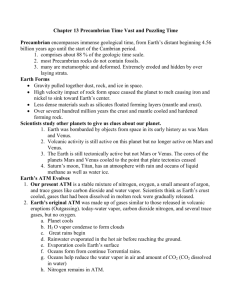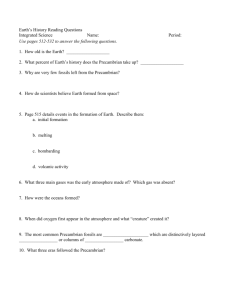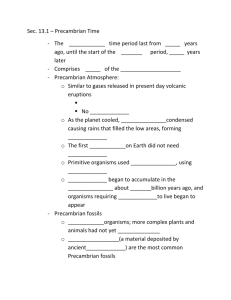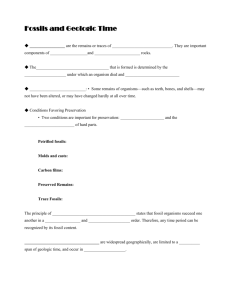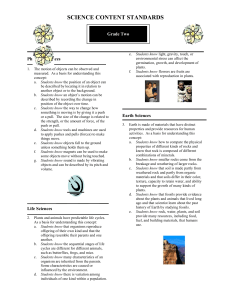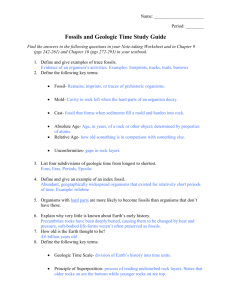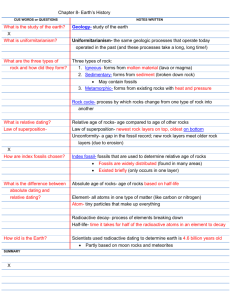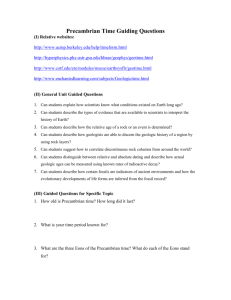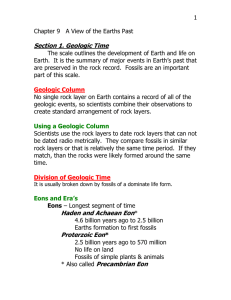Chapter 13 Precambrian Time Vast and Puzzling Time
advertisement
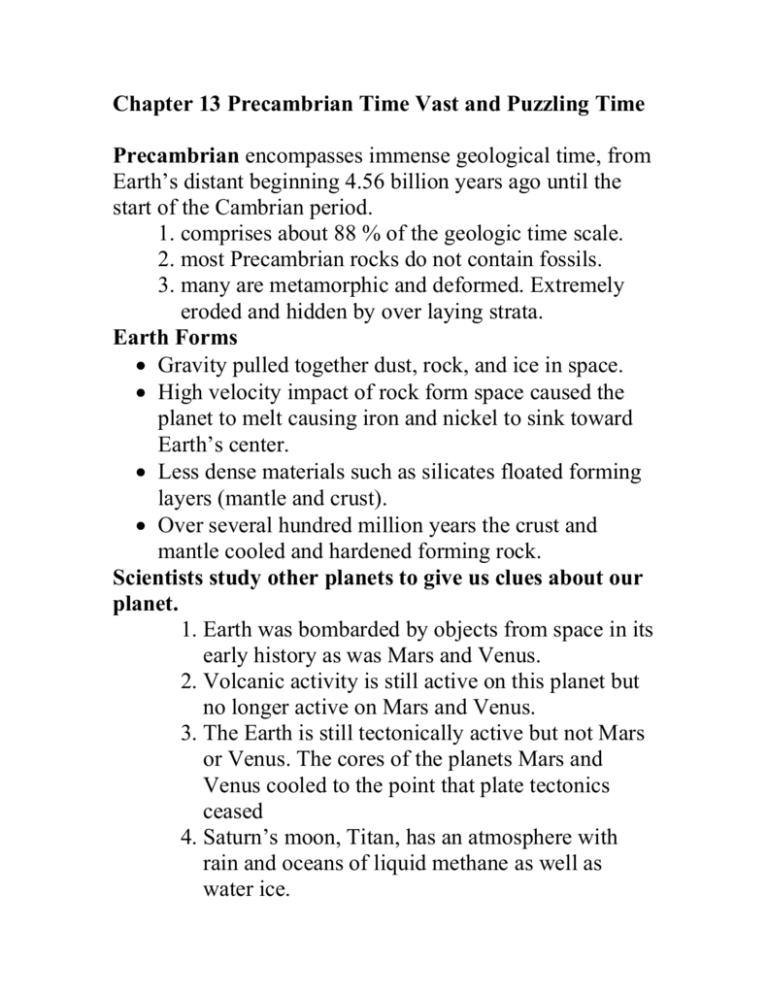
Chapter 13 Precambrian Time Vast and Puzzling Time Precambrian encompasses immense geological time, from Earth’s distant beginning 4.56 billion years ago until the start of the Cambrian period. 1. comprises about 88 % of the geologic time scale. 2. most Precambrian rocks do not contain fossils. 3. many are metamorphic and deformed. Extremely eroded and hidden by over laying strata. Earth Forms Gravity pulled together dust, rock, and ice in space. High velocity impact of rock form space caused the planet to melt causing iron and nickel to sink toward Earth’s center. Less dense materials such as silicates floated forming layers (mantle and crust). Over several hundred million years the crust and mantle cooled and hardened forming rock. Scientists study other planets to give us clues about our planet. 1. Earth was bombarded by objects from space in its early history as was Mars and Venus. 2. Volcanic activity is still active on this planet but no longer active on Mars and Venus. 3. The Earth is still tectonically active but not Mars or Venus. The cores of the planets Mars and Venus cooled to the point that plate tectonics ceased 4. Saturn’s moon, Titan, has an atmosphere with rain and oceans of liquid methane as well as water ice. Earth’s ATM Evolves 1. Our present ATM is a stable mixture of nitrogen, oxygen, a small amount of argon, and trace gases like carbon dioxide and water vapor. Scientists think as Earth’s crust cooled, gases that had been dissolved in molten rock were gradually released. 2. Earth’s original ATM was made up of gases similar to those released in volcanic eruptions today-water vapor, carbon dioxide nitrogen, and several trace gases, but no oxygen. a. Planet cools b. H2 O vapor condense to form clouds c. Great rains begin d. Rainwater evaporated in the hot air before reaching the ground. e. Evaporation cools Earth’s surface f. Oceans form from continue Torrential rains. g. Oceans help reduce the water vapor in air and amount of CO2 (CO2 dissolved in water) h. Nitrogen remains in ATM. 3. Oxygen is released in ATM a. Primitive organisms, primarily Cyanobacteria use CO2 and release oxygen. b. Oxygen content in ATM increases. c. Free oxygen did not remain free because it combined with the iron in the ATM and in the rocks to form iron oxides (rust). Once all the iron has reacted then oxygen begins to accumulate in the ATM (about 2.5 billion years ago). 4. Precambrian Rocks a) Rocks are buried deeply and can be seen except in places like the Grand Canyon and mountain ranges where rock is extensively eroded. b) Shields are deformed Precambrian metamorphic rocks that dominate the surface of some continents. It is called a shield because they roughly resemble a warrior’s shield in shape. c) Fossils Precambrian had not yet evolved most common are stomatolites which are not the remains of actual organisms but are layered mounds or columns of calcium carbonate deposited by algae. Stomatolites are indirect evidence of algae because they closely resemble deposits make by modern algae d) Most actual organisms preserved in Precambian rock are microscopic e) Many of the ancient fossils are preserved in chert-are hard dense chemical sedimentary rock. These fossils are the most primitive organism called PROKARYOTES. The most advanced are called EUKARYOTES and evolved later. f) Many are Trace fossils that are not fossils of the animals themselves but rather impression of their activities, such as trails and worm holes
